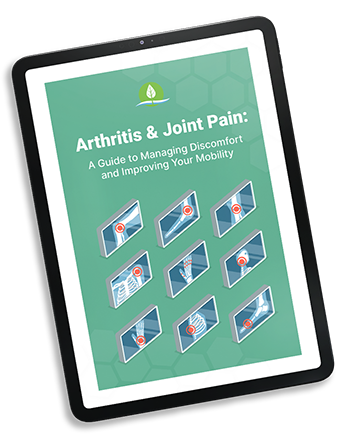Diabetes is a metabolic disorder. In diabetes, metabolism fails, causing the body to produce improper insulin levels.
The chances are that if you have diabetes, you are aware of several of the complications that come along with it.
Diabetes can affect several body organs, including the eyes, kidneys, and heart. But it can also affect the health of your bones and cause bone disease.
About Diabetes
Metabolism begins when we eat foods containing carbohydrates. These carbohydrates become sugars and enter the bloodstream. In healthy people, the body’s cells use glucose for energy. This energy is important to perform various functions. But for glucose to leave the blood and enter cells, insulin must be available.
Your pancreas produces insulin. Insulin moves glucose into your cells to provide you with the oxygen you need. In people with diabetes, the body produces either too much or not enough insulin. Or the body is not responding correctly to the insulin that it is producing. This is what we call insulin resistance.
People with type 1 diabetes produce little to no insulin. People with type 2 diabetes don’t make enough insulin, or their bodies respond improperly to the insulin created. In both types of diabetes, you can experience high blood sugar. Type 2 diabetes is more common in older people. Usually, type 2 diabetes develops in people who are overweight or inactive. Type 2 diabetes accounts for approximately 90 percent of all cases of diabetes.
How diabetes affects bone health
The mechanisms behind diabetic bone disease are not entirely clear. Whether bone fragility happens alongside diabetes or is itself a complication of diabetes is a point of debate. Diabetes mellitus changes your bone metabolism, which is one of the significant long-term complications we see in diabetes.
Diabetes increases the risk of periodontitis or gum disease. This leads to what we call alveolar bone loss, weakening the bones. One complication of diabetes is microangiopathy, which is a disease of the small blood vessels. Microangiopathy is a type of microvascular disease related to bone mineral density, bone structure, and bone turnover.
The risk of bone fracture in diabetes depends on how long you’ve had diabetes. It also depends upon how well you manage your diabetes.
Low BMD (bone mineral density) is something we see consistently in patients with type 1 diabetes. Interestingly enough, bone mineral density is often average or even higher in type 2 diabetes.
Even with higher bone mineral density, patients with type 2 diabetes have a disproportionately increased risk of fragility fractures. In both type 1 and type 2 diabetes, bone seems to be more fragile for a given density.
The pathways diabetes can affect the bone through
- Obesity
- Changes in insulin levels
- Higher concentrations of advanced glycation end products in collagen
- More urinary excretion of calcium
- Lower absorption of calcium in the intestines
- Inappropriate homeostasis response of parathyroid hormone secretion (the parathyroid hormone regulates calcium absorption in the body)
- Complex alterations of vitamin D regulation
- Decreased kidney function
- Lower insulin-like growth factor I levels
- Microangiopathy
- Inflammation
- Inflammatory cytokines
- Skeletal muscle-derived hormones
- Incretins
- Hydrogen sulfide production
- Cortisol secretion
- Peripheral activation
All of the above factors can alter bone formation and breakdown. They can also affect the appearance of collagen and bone marrow.
Do keep in mind that people with diabetes can experience hypoglycemia, which is low blood sugar. Low blood glucose can increase your risk of falls.
Also, certain anti-diabetic medications have direct effects on bone and mineral metabolism. These can contribute to increased fracture risk in diabetic patients taking these medications.

Bone diseases linked to diabetes
Bone disease is any condition that causes damage to the skeleton. This makes bones weaker and therefore more vulnerable to fractures.
Do you think of weak bones and fractures as a normal part of aging? They’re actually not. Although we begin childhood with solid bones, anyone of any age can maintain bone strength.
Diabetes is one of the primary risk factors for periodontal disease. Recent meta-analyses and cohort studies show that type 1 and type 2 diabetes are associated with increased bone fracture risk. This is especially true of hip fractures.
Osteoporosis
The osteoporosis seen in diabetes is different from the type seen in postmenopausal women and age-related osteoporosis. The kind we see in diabetes is due to kidney disease, nerve damage, and blood vessel disease.
Osteoporosis is one of the most common bone diseases. It involves low bone mass and structural deterioration of bone, leading to instability of bone. This, therefore, increases the risk of fractures of the hips, wrists, knees, and spine.
The good news is that osteoporosis is both preventable and treatable. One in three women over the age of 50 will experience an osteoporosis-related fracture. One in five men over 50 years old will experience osteoporosis fractures.
When bones lose minerals like calcium, this leads to low bone density. This can then lead to osteoporosis. Bones then become weak and fracture easily. People with diabetes have a lower quality of bone, which then increases the risk of osteoporosis in diabetes.
Osteopenia
In osteopenia, bones are weaker than usual. This lower bone mass and lower bone density are not low enough to increase the risk of bone fracture. Osteopenia is almost like a pre-osteoporosis. Research shows that osteopenia is a known complication of type 1 diabetes. This is particularly true of people who use high doses of insulin.
Charcot foot
Charcot foot is also called Charcot neuropathic osteoarthropathy. This is one of the known diabetic complications, which causes deformities in the feet and ankles.
The symptoms of Charcot foot are swelling, redness, and deformity. It can be helpful to use an assistive device. This helps because it takes the pressure off the affected foot. Custom shoes can also be beneficial, as they allow for the foot to heal. If Charcot foot becomes extreme, you may require surgery.
Diabetic foot osteomyelitis is another diabetic complication of the feet. This involves a soft tissue infection that spreads into the bone.
Diabetic hand syndrome
Diabetic hand syndrome is also called diabetic cheiroarthropathy. This is a complication of both type 1 and type 2 diabetes.
In diabetic hand syndrome, there is limited finger movement. The hands also become thick and waxy in appearance and texture.
Diabetic hand syndrome is more common in people with chronic and uncontrolled diabetes.
Diffuse idiopathic skeletal hyperostosis
Diffuse idiopathic skeletal hyperostosis is also referred to as Forestier disease. This is a type of arthritis that affects tendons and ligaments. It is similar to rheumatoid arthritis, which is an autoimmune condition.
The most common area to be affected is the spine. Forestier disease leads to calcification of tissues. It also causes bone spurs to develop in areas of the spine that connect to bone.
Moreover, bone spurs can form in the knees, feet, hands, shoulders, and hips. Bones throughout the body can become calcified. Type 2 diabetes can increase the risk of Forestier disease, as can any condition that raises insulin levels.
Frozen shoulder
Frozen shoulder is also called adhesive capsulitis. It happens when ligaments around the shoulder get stiff and inflamed. Since diabetes involves inflammation, this makes it harder to heal from frozen shoulder.
In fact, the shoulder joint pain and stiffness can become so severe that even the simplest activities can become difficult. Buttoning a shirt can become quite the task!
Healing frozen shoulder is a long process that can take months or even years. Research shows that people with unmanaged diabetes are five times more likely to get frozen shoulder than people without diabetes.
Dupuytren’s contracture
Dupuytren’s contracture is also known as palmar fascia, a condition of the hand. Over time, the connective tissues underneath the skin of the hand thicken and scar, which restricts finger movement. You may even see the fingers curl and bend towards the palm.
People with diabetes have triple the risk of developing Dupuytren’s compared to people without diabetes. People with type 1 diabetes have the highest risk for this complication of diabetes.
Get Your FREE Arthritis Guide
- Learn how to naturally improve your arthritis symptoms
- Dietary recommendations, exercise guides, supplements, and lifestyle changes
- Developed exclusively by our medical doctor
How to reduce the risk of diabetic bone disease
So, how can you reduce your risk of diabetic bone disease?
Medication
Unfortunately, there is a lack of research looking at medications that can help to prevent osteoporotic fractures in patients with diabetes.
Certain antidiabetic medications do show some positive effect on bone health, though. Metformin is one of them. This is good because many diabetes patients already take metformin and won’t need to add any more drugs into their treatment plan.
Some randomized controlled trial studies show that antiosteoporotic drugs might be a viable strategy.
Diet
A healthy lifestyle is the best way to prevent diabetic bone disease. This involves regular exercise and a balanced diet. Your diet should include fruits, vegetables, lean meats and fish, whole grains, nuts, and seeds.
It’s also important you ensure you are eating foods that contain calcium and vitamin D for bone health. This is because vitamin D deficiency can contribute to lower bone density.
Weight-bearing activities
Weight-bearing and strength training types of exercise make bones stronger. Some examples of weight-bearing activities include running, walking, dancing, yard work, and playing tennis. Strength training activities include squats, planks, and lifting weights.
Cutting out bad habits
To reduce your risk of diabetic bone disease, you should quit smoking. Women who smoke can enter menopause earlier. This means that they can also develop bone loss earlier because of the low estrogen levels after menopause.
Quitting smoking also reduces your risk of heart disease or cardiovascular disease, which is elevated in diabetes already.
Too much alcohol consumption can also be harmful to your bone health and contribute to diabetic bone disorder. People who drink heavily have poorer nutrition and a higher risk of falling.
Ben’s Joint Care Pro
Joint Care Pro, our joint health supplement, contains natural, proven ingredients that support joint care and joint health.

It is designed to improve mobility and flexibility, reduce joint pain, restore joint strength, protect cartilage and joint tissue, and rebuild strength and density.
Conclusion
Diabetes can affect multiple aspects of your health. Bone health is one aspect that people often forget, but several bone diseases link to diabetes.
To reduce your risk of developing these bone diseases:
- Make sure you exercise and eat a well-rounded diet.
- Quit smoking.
- Consider cutting back on alcohol intake.
- Talk to your doctor about medications that may help to reduce your risk of diabetic bone disease.
So if you have diabetes and are concerned about your bone health, talk to your trusted health care professional to get an assessment of your bone mineral density.
Explore More








